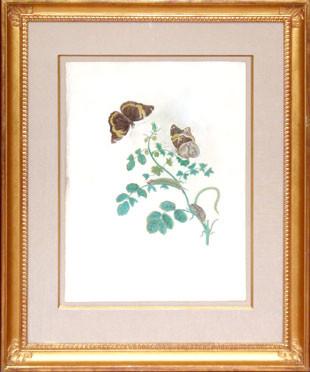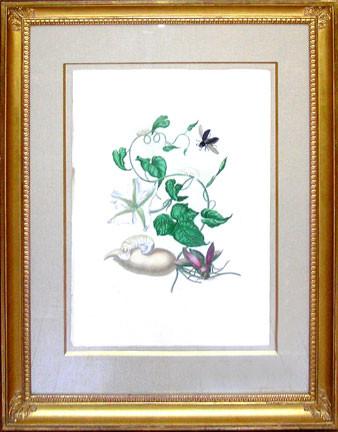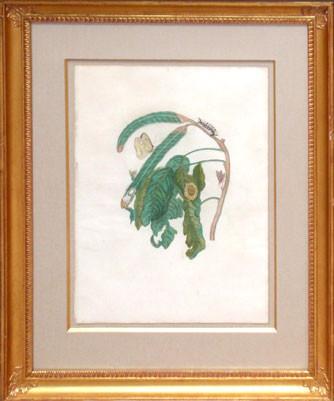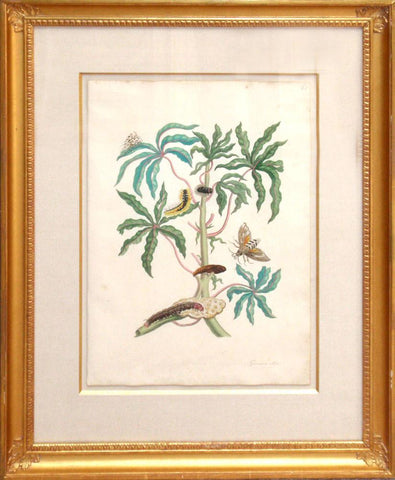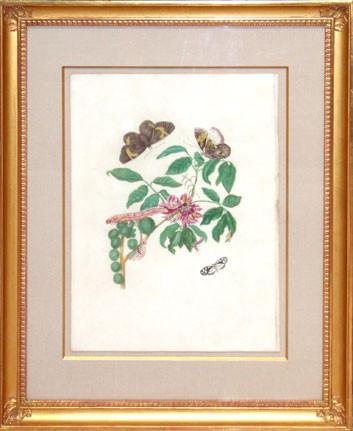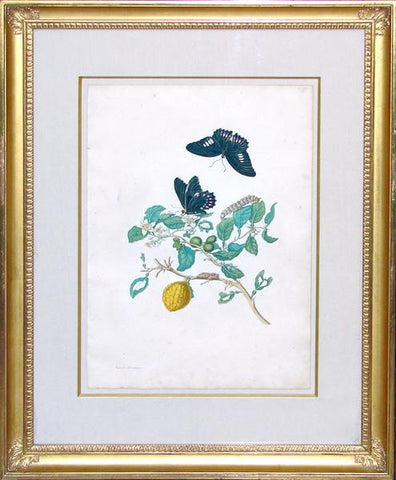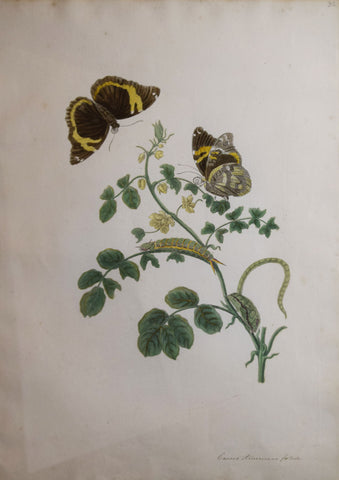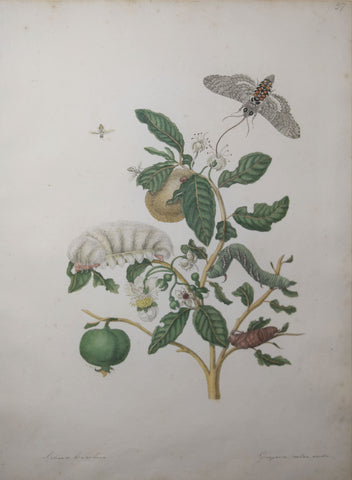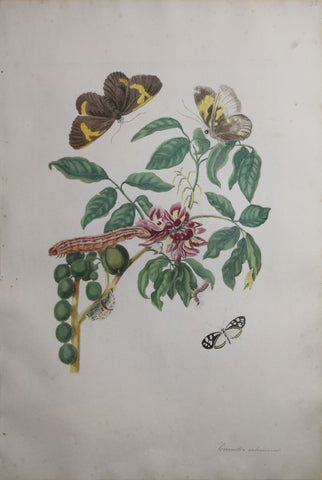Search By Artist
Maria Sybilla Merian (1647-1717), Transfer Watercolors
MARIA SYBILLA MERIAN (1647-1717)
Illustrations from Metamorphosis Insectorum Surinamensium
Transfer print watercolors
Amsterdam, 1705
Maria Sibylla was born in Frankfurt, Germany to the famous publisher, Matthias Merian, and his second wife, Johanna Sibylla Heim. At the age of three her father died andone year later her mother married the Dutch painter, Jacob Marrell, also a resident of Frankfurt. He provided her with an early artistic training and introduced her to natural history illustration. At the age of eighteen Maria Sibylla married Johann Graffe, a former apprentice of her stepfather, and moved to Nuremberg. She gave birth to two daughters, Johanna Helena and Dorothea Maria, and during this time painted watercolors on vellum for sale.
Merian's life is, by all accounts, an amazing story. She overcame contemporary estimations of women's creativity and talent to become one of the most noted natural history artists of her time. In 1685, after twenty years of marriage to the artist Jacob Marrel, she left him, taking her two daughters with her, to join the Labadist religious sect. In 1699 she departed for the Dutch colony of Surinam to draw and watercolor studies of plants and insects for her most celebrated, lavish work, The Insects of Surinam. Published in Amsterdam in 1705, it achieved immediate acclaim.
In the artist's transfer-prints colors are alternately subtle and vibrant, capturing the quality of her subjects with striking naturalism. Yet while she maintains a scientist's eye for precision, her creative decisions and compositions give these images a style which is distinctly hers. Each image demonstrates Merian's masterful grasp of detail and nuance, as well as her outstanding ability to combine science and art. Equally significant, to early 18th century Europeans, her illustrations represented the first views of these American plants and insects. Merian not only concentrated upon the beauty of flowers but in the majority of her compositions included insects, an unusual consideration for a woman of the seventeenth century.
These spectacular examples of her work are from one of a very few transfer-print watercolor volumes known to exist. Merian herself prepared the volume. After an uncolored print was made, she applied dampened paper to it, pressing by hand to create an image of the print in reverse. In this volume she chose to block out the plate numbers and then add by hand, to some images, numbers and notations. Merian then painstakingly watercolored the dried paper herself, ensuring that the colors were true to the specimens she had seen in South America, and also allowing her style to emerge with greatest clarity. The volume was not meant for sale, and its intended purpose cannot be known with any certainty. Perhaps it was created as a gift for a wealthy and important patron, perhaps Merian meant to keep it herself.

